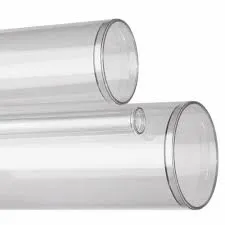gru . 22, 2024 06:56 Back to list
hdpe pipes and fittings
Understanding HDPE Pipes and Fittings A Comprehensive Overview
High-Density Polyethylene (HDPE) pipes and fittings have gained popularity in various industries due to their unique properties and benefits. As a robust and versatile material, HDPE is commonly utilized in water distribution, irrigation systems, mining, and even gas distribution. This article will delve into the characteristics that make HDPE a preferred choice, its applications, and its advantages over traditional piping materials.
Characteristics of HDPE
HDPE is known for its high tensile strength and resistance to impacts, making it suitable for a wide range of applications. The material is lightweight, which simplifies transportation and installation. Moreover, HDPE pipes possess excellent chemical resistance, allowing them to endure harsh environmental conditions and resist corrosion from chemicals, fertilizers, and sewage. This makes HDPE an ideal choice for applications involving potable water and sewage disposal.
Another significant characteristic of HDPE is its flexibility. Unlike rigid pipes made from materials such as PVC or concrete, HDPE can bend without breaking, enabling it to accommodate the natural movement of the ground and reduce the likelihood of fractures. Additionally, HDPE pipes feature smooth internal surfaces which minimize friction loss and enhance flow rates, making them efficient conduits for various fluids.
Applications of HDPE Pipes and Fittings
HDPE pipes and fittings are highly versatile and find usage in numerous sectors. In the municipal water distribution system, these pipes are employed for transporting potable water due to their durability and safety. Similarly, in agricultural applications, HDPE pipes are integral to drip irrigation systems, allowing for efficient water usage and enhanced crop yields.
Furthermore, HDPE is extensively used in industrial applications. Its chemical resistance makes it suitable for conveying hazardous materials, while its ability to handle extreme temperatures is valuable in certain engineering applications. Additionally, HDPE's lightweight nature makes installation in these contexts more economical because it reduces labor costs.
hdpe pipes and fittings

In the construction industry, HDPE fittings are used to connect pipes, ensuring a leak-proof and secure system. The fittings come in various shapes and sizes, including elbows, tees, and couplings, which allow for the creation of complex piping systems tailored to specific needs.
Advantages of HDPE Over Traditional Materials
One of the primary advantages of HDPE pipes and fittings is their longevity. With a lifespan that can exceed 50 years, they require minimal maintenance compared to metal or concrete pipes, which may corrode or degrade over time. This durability translates to cost savings in the long run, making HDPE a financially wise choice for both public and private sectors.
Moreover, the installation process for HDPE pipes is less labor-intensive. The lightweight nature of HDPE materials significantly reduces the effort needed for transport and installation, allowing for more efficient project completion. Additionally, with advanced installation techniques such as fusion welding, HDPE pipes can be joined seamlessly, eliminating potential leak points.
Another critical advantage is the environmental impact. HDPE is a recyclable material, and its manufacturing process requires less energy compared to traditional piping materials. This positions HDPE as a more sustainable option in an age where environmental consciousness is becoming increasingly crucial.
Conclusion
In conclusion, HDPE pipes and fittings present numerous benefits that make them a superior choice for various applications, ranging from water supply and agriculture to industrial uses. Their durability, lightweight nature, flexibility, and chemical resistance contribute to their widespread adoption across industries. As technology continues to evolve, HDPE is likely to pave the way for innovative solutions in piping, setting a standard for efficiency and sustainability in infrastructure development.
-
Durable PP Rigid Sheet: Versatile & High-Quality Plastic Panels
NewsAug.08,2025
-
Premium Glossy PP Rigid Sheet – Durable & Versatile
NewsAug.07,2025
-
High-Quality HDPE Sheet | Durable Plastic Panels
NewsAug.06,2025
-
High-Precision PVC Rigid Sheets for Vacuum Forming | AI-Optimized
NewsAug.05,2025
-
Durable PVC-M Water Supply Pipes | 60-Year Life
NewsAug.04,2025
-
Premium HDPE Water Supply Pipes: Durable & Leak-Proof
NewsAug.03,2025

